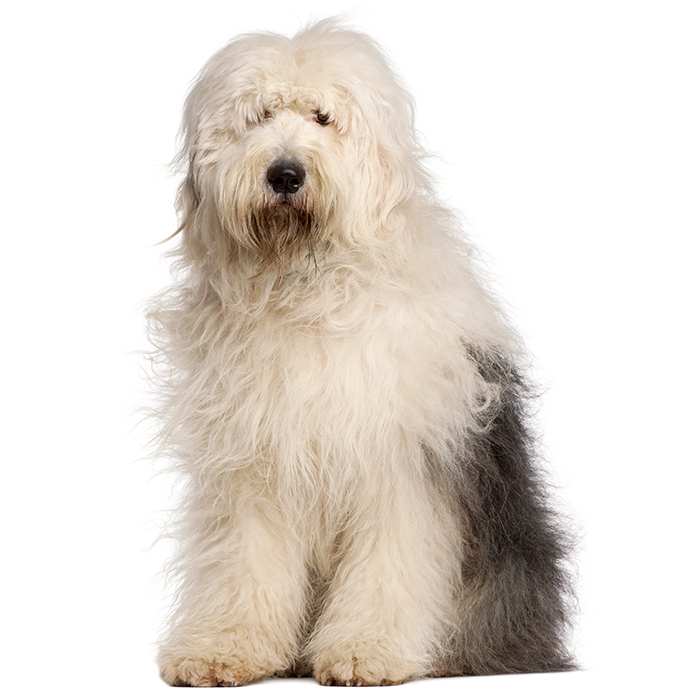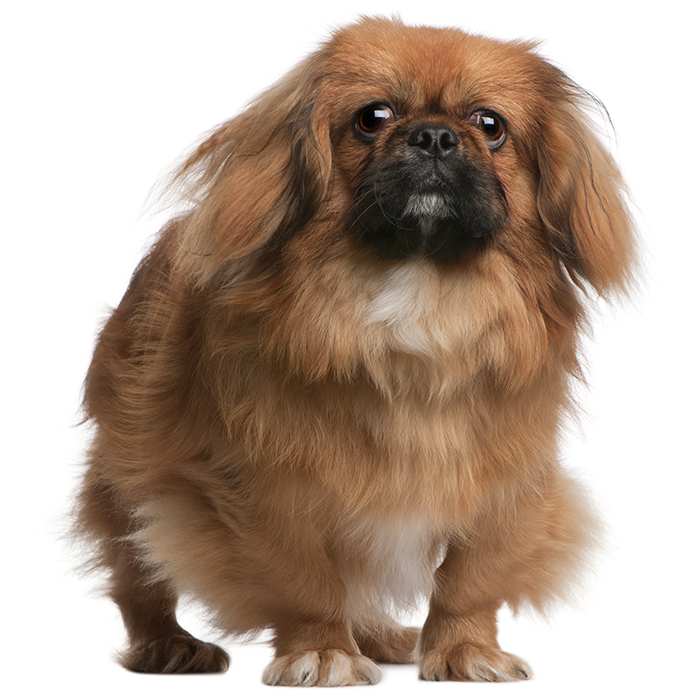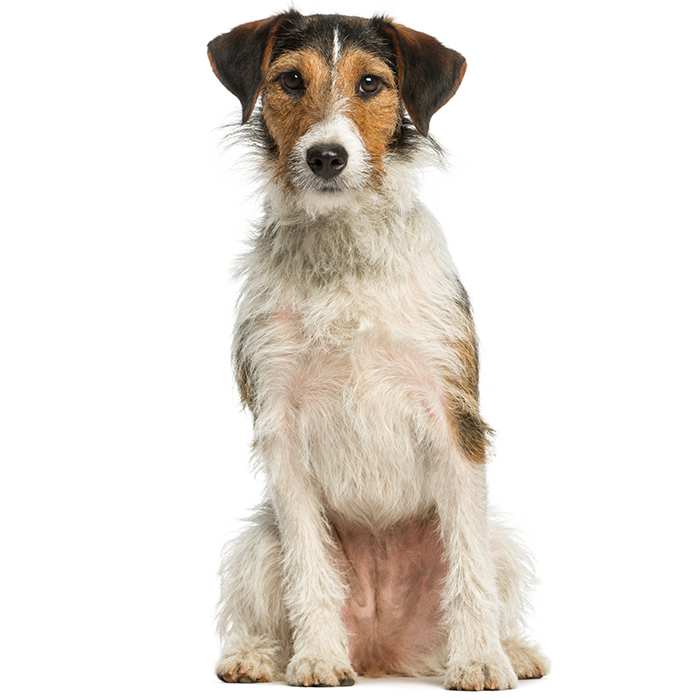Beaglier


| Recommended for | Families with children |
| Breed Classification | Hybrid / designer |
| Other names | Beagalier, Beagelier |
| Lifespan | 12-14 years |
| Size | Small |
| Temperament | Affectionate, loyal, good natured, playful |
| Intelligence | Above average |
| Tendency to bark | High |
| Maintenance Level | Low to medium |
| Health Risk | This breed is in the lower risk category for developing health issues, hence it is one of the least expensive breeds to insure. |
Insuring a Beaglier?
Get award-winning cover with more benefits and up to 80% of eligible vet bills reimbursed. Find out about your cover options.
Get a quick quote
Is this breed right for you?
Try our breed selector quiz to find out your best matching breed!
Insuring a Beaglier?
Get award-winning cover with more benefits and up to 80% of eligible vet bills reimbursed. Find out about your cover options.
Get a quick quote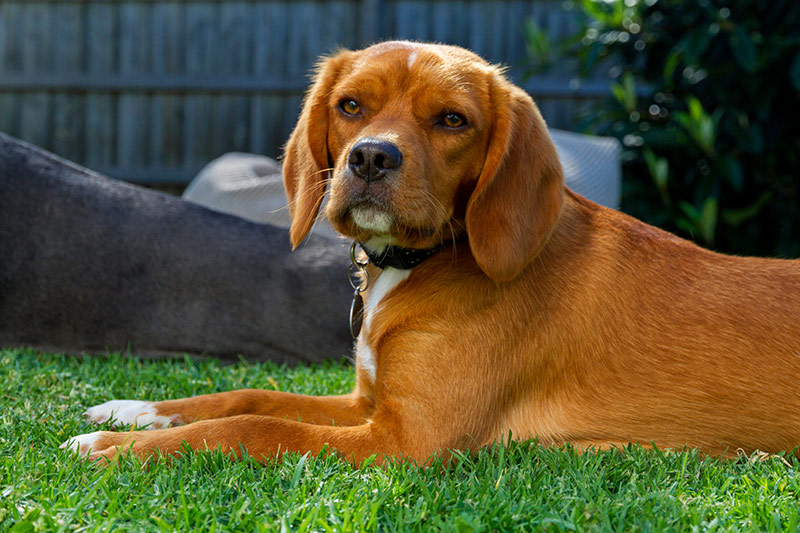
Breed history of Beagliers
As one of the relatively new ‘designer’ hybrid dog breeds, there is a very brief history to the Beaglier. The breed originated in Australia in the 1990’s, where it was developed because of the desirable characteristics of the two parent breeds, the Cavalier King Charles Spaniel and the Beagle. The breeders were looking for a small, healthy, energetic dog with a less active scent drive than the Beagle. The Cavalier King Charles Spaniel was selected because it is known to be a well-mannered, even-tempered breed.
The two parent breeds both have a lengthy history. The Cavalier King Charles Spaniel is thought to be named in part after the 17th century English king, Charles I, who took the throne in 1625, while the Beagle was one of the first breeds to be recognised by the American Kennel Club (AKC), back in 1885.
In Australia, the Beaglier quickly became particularly popular because of its cuteness and lovely temperament. Since then, the breed has gained favour internationally, and nowadays can be found throughout North America and Europe. We anticipate that Beagliers will continue to spread around the world because they make such wonderful companions and can adapt to almost any environment.
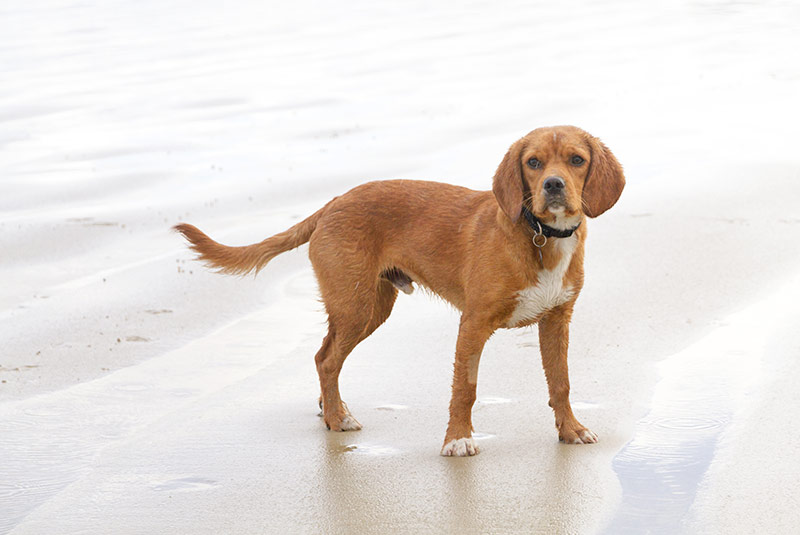
Physical description of Beagliers
The Beaglier is a hybrid or designer breed, produced by crossing the Cavalier King Charles Spaniel and the Beagle. The result is a small to medium sized dog with a short, rounded muzzle and big, expressive and sad looking eyes – which, if you are a bit of a softy, will simply make you forgive any transgression!
Their coat is usually smooth, soft and short, but it can occasionally be slightly coarse (like the Beagle) or wavy, silky-smooth and longer (like the Cavalier King Charles Spaniel). They are most often tricolour, but they can also come in tan, tan and white, red and white (Blenheim), ruby, black and tan, black and white or sometimes pure black.
| Weight range | 4.5 kg to 11.6 kg |
| Height range | 30 to 40 cm |
| Colours | Tricolour combinations of brown, black, white, and cream are most common |
| Coat length | Short |

Beaglier personality and temperament
There is no mistaking the fact that Beagliers are great family dogs: they love children, playing and being with people. Loyal, soft and gentle, they show a lot of affection, not just to their own family but to everyone they come across. They are receptive to their owner’s emotions and make wonderful companions, bonding closely with their human parents and family members.
Beagliers are affectionate to everybody and everything and love being around their owner, family members and people in general. They are playful and gentle and make great family dogs. Not surprisingly, they do need a lot of social interaction; they desire to always be with someone or around people and hate being left on their own. They are even friendly towards strangers, which is great when Aunt Isabelle makes her annual visit, but not necessarily so if an intruder comes calling – unless they can scare him off with excessive affection!
Beagliers adapt very well to lifestyle changes and basically all living environments. They don’t mind moving from one place to another with their owner. However, they don’t tolerate irregular daily routine, noisy households and frequent guest visits particularly well.
On the downside for many owners and their neighbours, Beagliers are highly vocal, often barking and howling loudly. They bark to communicate and can change their bark depending on their emotional level and what they are trying to say. They will bark to warn or protect their family, if they are fearful or bored, as a greeting or to seek attention, or if they are suffering from separation anxiety (did we mention that they don’t like to be left home alone? If not, your neighbours will be sure to let you know!)
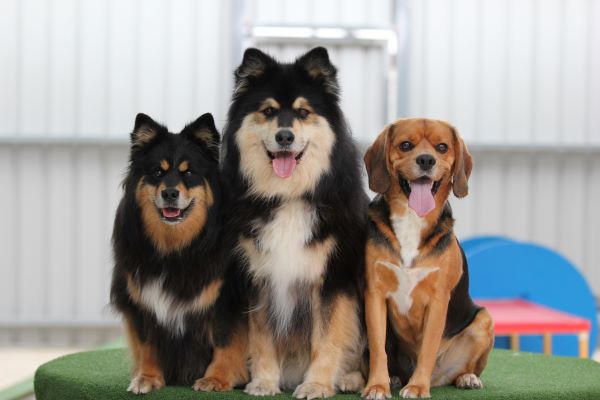
Beagliers with kids and other pets
Beagliers love kids! They are very child-friendly dogs and enjoy being surrounded by children – and they don’t get snappy if playtime gets a little rough.
This breed is great for those with other dogs. Being the offspring of two highly sociable breeds, Beagliers love the company of other dogs; in fact, they are happiest when living with another dog. They just may need monitoring around smaller, non-canine animals which trigger their hunting and chasing instincts!
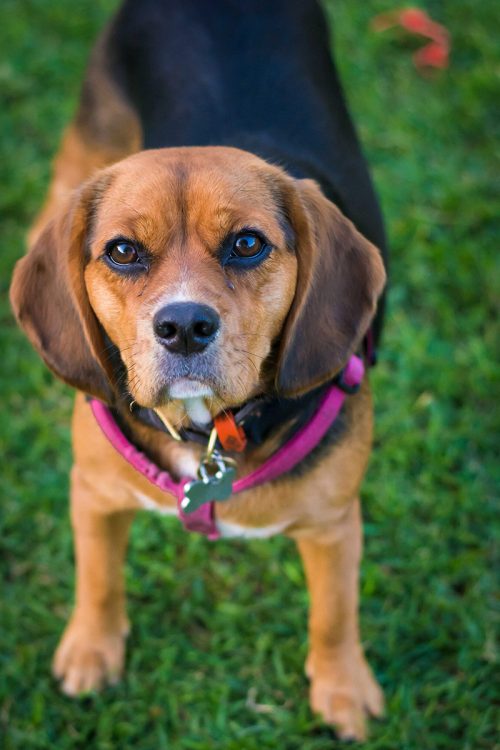
Beaglier training and exercise
Although some gentle and persist nudging may be necessary to get them out the door, when the fresh air hits their nostrils they can quickly turn into action-packed super dogs. Once outside, the Beagle’s detective nose takes over, and wandering away from their owners is a common occurrence, along with finding anything even slightly edible in the park. However, when indoors, Beagliers can be real couch potatoes, and can easily stay on your lap having cuddles all day long.
Did someone say ‘walkies?’ Beagliers have a higher energy level than many other dog breeds, coupled with a strong desire to explore the world. If you live an active life, this breed can be a great choice for you, as Beagliers need quite a lot of exercise including daily walks and playtime with toys and children.
While they love going for walks, it is safer to walk them on a leash unless you teach them to come back to you on command. If you have a garden, they don’t need much encouragement to run and play in it. Make sure your fences are solid and secure, as they have been known to damage enclosures in attempting to explore further afield.
Beagliers can be stubborn (just like their Beagle parent) and, as a result, a bit difficult to train, in which case patience, persistence and early socialisation will be required to help them become well-functioning members of the family. Or they can be timid yet eager to please (taking after their Cavalier King Charles Spaniel parent), which makes for easier training. They will usually obey commands they have been taught, especially when food is used as a reward. Beagliers are a little bit more sensitive than other dog breeds and do not respond well to punishment-based training; instead they require consistency, clear rules and positive reinforcement.
| Energy level | High |
| Exercise requirements | Medium |
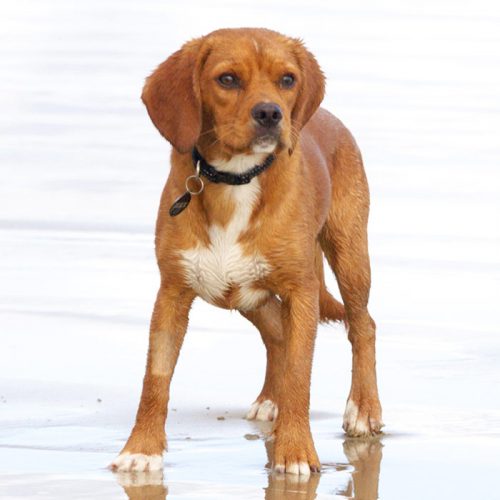
Beaglier feeding and nutrition
The Beaglier should be fed a premium, high-quality dog food appropriate to the dog’s age (puppy, adult, or senior) and activity level.
Beagliers can be prone to obesity if overfed, but this can be managed with a balanced diet. Watch your dog’s calorie consumption and weight level and don’t overindulge in the treats department.
Check with your vet if you have any concerns about your Beaglier’s weight or diet.

Beaglier care and grooming
Beagliers typically have short, shiny coats and their grooming requirements are moderate – a good brushing per week and the occasional bath.
More frequent bathing is not recommmended as they tend to get dry, flaky skin, and they need their natural oils for optimum radiance.
Beagliers do not shed much; however, allergy sufferers can struggle with them.
Health issues for Beagliers
As a crossbred breed, the Beaglier may inherit any of the parental breeds’ health issues, some of these being:
- Beagle Dwarfism (chondrodystrophy): Because Beagliers are genetically 50 percent Beagle, they can suffer from a genetic disorder called Beagle Dwarfism. This condition causes poor development of cartilage which presents as short legs and can also lead to Intervertebral Disc Disease (IVSS) in affected dogs. The disorder ranges from mild to severe – in mild cases, the dog may live a normal life and simply look a bit odd, in moderate cases, the dog may require anti-inflammatories and other measures to delay onset of arthritis and joint issues, while in severe cases, the dog may have multiple deformities and severe pain, with euthanasia often considered as the most humane outcome.
- Ear Infections: Like their parents, Beagliers have long, floppy ears in which air, debris, moisture and even a parasite can get trapped. When the trapped substance cannot escape, an ear infection can result. You may notice your dog is constantly shaking his head and scratching his ear, or an unpleasant smell coming from the ear, classic symptoms of an ear infection. When caught early on, an ear infection is relatively straight forward to treat; the vet will remove any foreign objects, usually under sedation, and ear drops are prescribed if infection is present.
- Eye Problems: Beagliers are prone to certain congenital eye conditions that can affect the parent breeds, including cherry eye, glaucoma and Progressive Retinal Atrophy (PRA).
Cherry Eye or ‘third eyelid’ is a disorder that occurs when the nictitating membrane, or third eyelid, is released from its position and protrudes out over part of the eye. Treatment entails repositioning or removing the prolapsed membrane.
Glaucoma is defined as high pressure within the eye, causing inadequate fluid drainage. It is a serious condition which can cause irreversible damage to the optic nerve, eventually leading to blindness. If caught early on, medication is prescribed to lower the pressure.
Progressive Retinal Atrophy (PRA) includes several inherited diseases that lead to degeneration of retinal photoreceptor cells (rods and cones) in dogs, typically leading to blindness. PRA worsens over time, with affected animals initially experiencing night blindness because the rods are affected first. The condition progresses to failed daytime vision.
- Joint Problems: Like their Cavalier King Charles Spaniel parents, Beagliers may suffer from congenital joint conditions, including hip dysplasia and luxating patellas.
Hip dysplasia occurs when the ball of the hip joint does not develop normally and fails to fit snugly into the hip socket. Mild cases can be eased with anti-inflammatory and pain-relief medications; in more severe cases, surgery may be required.
A luxating patella is a kneecap that moves out of its normal position. When the patella luxates, the dog has difficulty bearing weight on the leg, although there are rarely any signs of pain. You may notice a skip in your dog’s step or see him briefly run on three legs. This condition can lead to other knee injuries, arthritis and pain.
- Hypothyroidism: Hypothyroidism, or low thyroid function, occurs when the thyroid gland doesn’t produce adequate amounts of thyroid hormone. It is a genetic disorder that can be brought on by thyroiditis (inflammation of the thyroid gland). Common symptoms of Hypothyroidism include abnormal weight gain, dry skin, hair loss, skin infections and reduced activity. While the condition is not life-threatening, life-long treatment with oral medication is required.
- Epilepsy: Epilepsy is a neurological disorder that bring on sudden, uncontrollable and repeated seizures. A seizure, also known as a ‘fit’, is an abnormal, uncontrolled burst of electrical activity in the brain. Grand mal seizures affect both sides of the brain and the entire body. The limbs will twitch and jerk, and your dog will probably lose consciousness. Focal seizures only affect a small part of the brain, so only one limb may twitch and jerk. Most cases of epilepsy in dogs cannot be cured. The aim of treatment is to eliminate seizures without causing intolerable side effects.
Not all conditions are covered by Pet Insurance. For details of Bow Wow Meow Pet Insurance cover, refer to the Product Disclosure Statement.
Free engraved pet ID tag on sign up3
Customer Satisfaction
21 day cooling off
Easy to use Pet Portal


